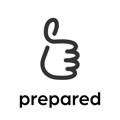In this article, Dr. Adi Marty explains what CBE is and what effects it could have in everyday clinical practice
Summary
- CBE focuses on skills training through “number of procedures”
- The number of procedures can be assessed with a programmatic assessment
- Sampling competence leads to an “assessment FOR learning” and not an “assessment OF learning”.
Why bother?
When you or your loved ones visit a doctor, you want to be sure that they are a competent professional. But how can we know that?
To stick with this example, pretty much all doctors go through a similar curriculum: a certain number of years for basic training, followed by a certain number of years for postgraduate training to become a specialist. Along the way, we have to attend some courses to earn certificates and take some exams to be admitted to the next training unit. What counts is the completion of a certain amount of time in training and the number of courses/processes/exams passed.
But the learners, the people, are all individually different. Each of us learns different things at a different pace. Some need 5 repetitions to understand it, others still struggle after 50.
Why CBE?
This is the core of Competency-Based Education (CBE).
The aim of CBE is to focus on outcomes: To ensure that learners are competent professionals at the end of their education. If competence is the constant, the “training time” and the “number of procedures” become variables.
The question now is: How do we measure competence?
In order to measure something, we need to define what we want to measure. For this reason, several CBE frameworks have been developed over the last 20 years, including the CanMEDS framework. These frameworks detail the outcome: what a competent physician should look like. The CanMEDS model, for example, uses seven characteristic roles that a competent physician should internalize, and within each role lists descriptors for the required attributes or competencies. Using these descriptors, we can check whether the learner in front of us meets the requirements or not yet.
Training, especially in the medical field, mainly takes place in the workplace, so it is probably best to assess competence at the point of care and not (only) with written tests. The bad news: assessing a learner's performance in the workplace can never be objective. On-the-job assessment will always be context-specific and depend on many factors, e.g. the learner, the supervisor, the relationship between trainee and supervisor, the task or complexity of the task, etc. The good news is that a well-designed sampling strategy will do the trick. The only way to get a clear picture of a trainee's competence is to collect many job-related assessments with little effort. This concept is referred to in CBME as “programmatic assessment”. Programmatic assessment means that we need a system of assessment to capture all the important aspects of a learner. A decision where the stakes are high, such as passing medical school, can only be made based on multiple low-risk assessments. Ideally, a “skills committee” rather than a single person would compile and analyze all available data for the decision-making process.
One of the most important aspects of this is to establish a system that ensures continuous sampling of job-related assessments and other assessment data or evidence of competence (course certificates, written exams during training, feedback from multiple sources, etc.). “Sampling, sampling, sampling”.
Programmatic assessment is also accompanied by a cultural shift from “assessment OF learning” to “assessment FOR learning”: every assessment situation should be optimized for learning.
The CBE meets the expectations that society has of healthcare professionals.
If I need a doctor and he/she has completed a true competency-based curriculum including programmatic assessment (no matter how long it took), I can be confident that this person can competently help me with my health problem.
